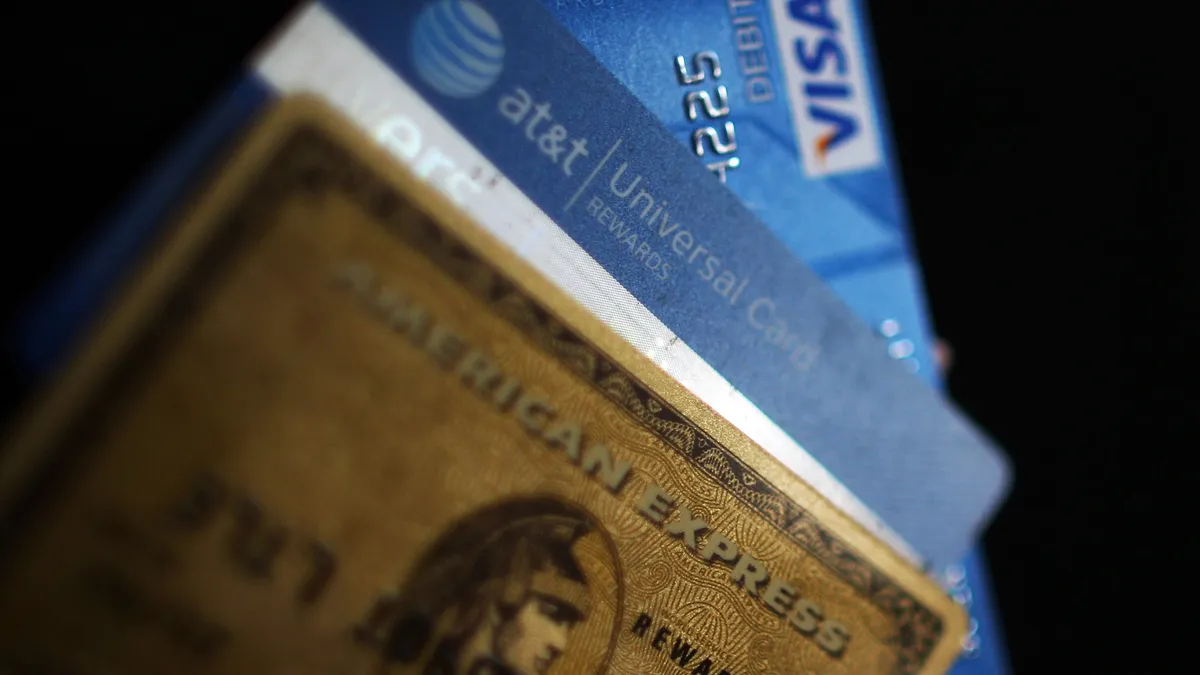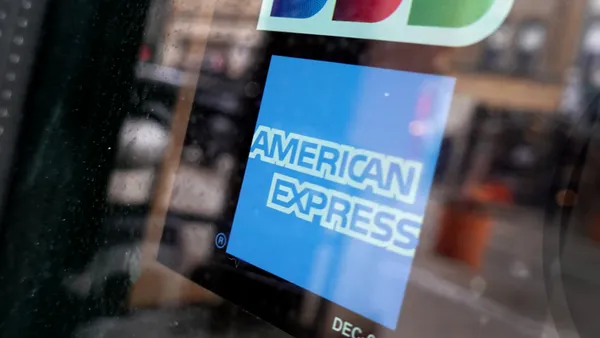Dive Brief:
- The percent of consumers who said last October that they’d recently made payments with cash declined to 83%, from 87% in 2023, according to the results of a survey of payment methods by the Federal Reserve Bank of Atlanta. Similarly, the proportion of survey respondents who had used checks fell to 35% in 2024, from 40% in 2023.
- The most popular form of payment for all types of transactions, including purchases and bill payment, were credit cards, according to the report. Of all the transactions tracked in the survey, 35% were made with credit cards, followed by debit cards (30%), cash (14%) and bank account methods (13%), the results showed. Checks captured just 3% and prepaid cards 2%.
- “Payment cards retained their dominance in the consumer sphere, representing two-thirds of payments by number and just over one-third by value,” said an abstract of the report by Fed researchers Kevin Foster, Claire Greene and Joanna Stavins.
Dive Insight:
The Atlanta Fed report, called the 2024 Survey and Diary of Consumer Payment Choice, surveyed 5,583 respondents last October about their spending habits from the previous 30 days with help from the Federal Reserve Bank of Boston and the Federal Reserve Financial Services.
The percentage of consumer transactions made using credit cards climbed last year over 2023 for the month when the Fed survey is conducted, rising to 35% from 32%, according to the report. The percentage for debit cards remained the same at 30%.
Nonetheless, the Fed noted the persistence of cash in a May 13 press release recapping the survey’s results. “Findings from this nationally representative survey showed that amid the increasing digitalization of payments, consumers continue to use cash and keep it handy,” the release said. “Cash ranked third as a top payment instrument among consumers, a position it has held for the past five years.”
The Atlanta Fed’s research also illustrates the rise of buy now, pay later services, though perhaps some reluctance to use them. While more than three-quarters (76.2%) of survey respondents said they had heard of BNPL providers, half of them were offered BNPL in the past 30 days, but only 9.7% used the service during that period, according to the survey.
BNPL providers have benefited from the rise in businesses offering the payment option. On of the biggest BNPL companies, Klarna, reported this week that the number of merchants using its platform jumped 27% to 724,000. Its customer base also increased by 18% by the end of March to 99 million users.
The Atlanta Fed’s survey also offered signs that efforts to shield consumers from fraud threats may be working. The proportion of consumers reporting credit card and debit card theft or fraud declined to 10% and 8%, respectively, according to the survey.
Still, credit and debit card fraud remains a concern. Nearly three-fourths of financial institutions surveyed by the Federal Reserve Financial Services said debit cards were the top payment method for fraud attempts in 2024, followed by checks (62%), non-bank payment apps (36%), ACH transactions (31%) and credit cards (24%).
Research reports suggest that payment fraud will become a greater headache for payment providers in the coming decades. An ACI Worldwide report released last fall predicts that authorized push payment fraud losses will rise to $3.08 billion in the U.S. by 2028. Furthermore, an analysis released in January from the research firm Nilson Report projects that card payment losses will surpass $400 billion globally over the next decade.













